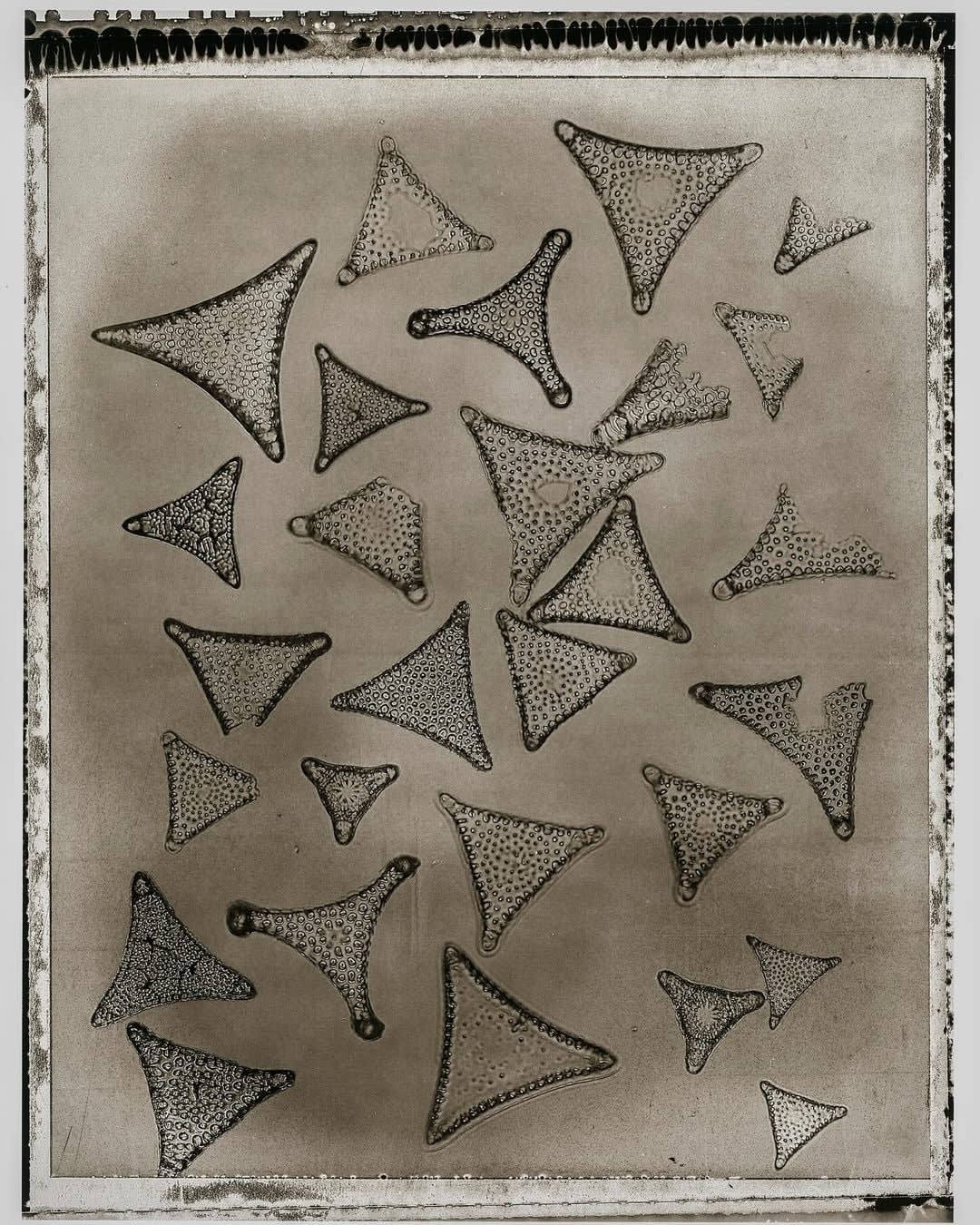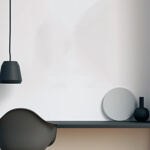FERMÉ du 28 novembre au 13 décembre
Jan C. Schlegel German, 1965
Plate #33, Mediterranean Sea, 2024
Série: Life on Earth
Platinum print
38 x 28 cm
15 x 11 in
15 x 11 in
Edition of 10 plus 1 artist's proof
Using a microscope, Polaroid 55 film which he then turns into a platinum print, Jan Schlegel's series 'Life on Earth' focuses exclusively on phytoplancton, the very foundation and basis of...
Using a microscope, Polaroid 55 film which he then turns into a platinum print, Jan Schlegel's series "Life on Earth" focuses exclusively on phytoplancton, the very foundation and basis of life. It is the lowest level of the food chain and it is thanks to these microscopic plants that we are able to breath and live. Through photosynthesis, 80 percent of the oxygen is produced by plankton. Due to the pollution of our oceans, micro plastic, the increase of carbon dioxide in our atmosphere and the effects of global warming, oceans have already lost 40 percent of plankton and it is expected that every year we will lose an additional 1 percent. The Atlantic Ocean is the most affected and marine researcher consider the Atlantic Ocean already as dead.
With this series Schlegel wants to show the beauty and uniqueness of Plankton. By giving them visibility, they are not an abstract concept foreign to us. There are many different kind, some bigger and some smaller but they all have one thing in common: we depend on them. All life on earth depends on them.
"Sometimes, when I peer through my microscope, I feel like I’ve stepped into a whole new world, discovering incredible beauty. The shapes of planktonic diatoms never cease to fascinate me: some are round and flat, others are ball-like or cuboid, displaying a myriad of shapes and structures. Among them, I’ve stumbled upon a collection of triangles that I find mesmerizing, each glowing uniquely under the UV light I use for photography.
It’s amazing to think that these tiny creatures are alive, growing, adapting to changes, and multiplying themselves. Floating mostly on the surface waters of our oceans, these tiny algae-like plants constitute the largest biomass on Earth and are responsible for 50% of the oxygen we produce."
Jan Schlegel
With this series Schlegel wants to show the beauty and uniqueness of Plankton. By giving them visibility, they are not an abstract concept foreign to us. There are many different kind, some bigger and some smaller but they all have one thing in common: we depend on them. All life on earth depends on them.
"Sometimes, when I peer through my microscope, I feel like I’ve stepped into a whole new world, discovering incredible beauty. The shapes of planktonic diatoms never cease to fascinate me: some are round and flat, others are ball-like or cuboid, displaying a myriad of shapes and structures. Among them, I’ve stumbled upon a collection of triangles that I find mesmerizing, each glowing uniquely under the UV light I use for photography.
It’s amazing to think that these tiny creatures are alive, growing, adapting to changes, and multiplying themselves. Floating mostly on the surface waters of our oceans, these tiny algae-like plants constitute the largest biomass on Earth and are responsible for 50% of the oxygen we produce."
Jan Schlegel








